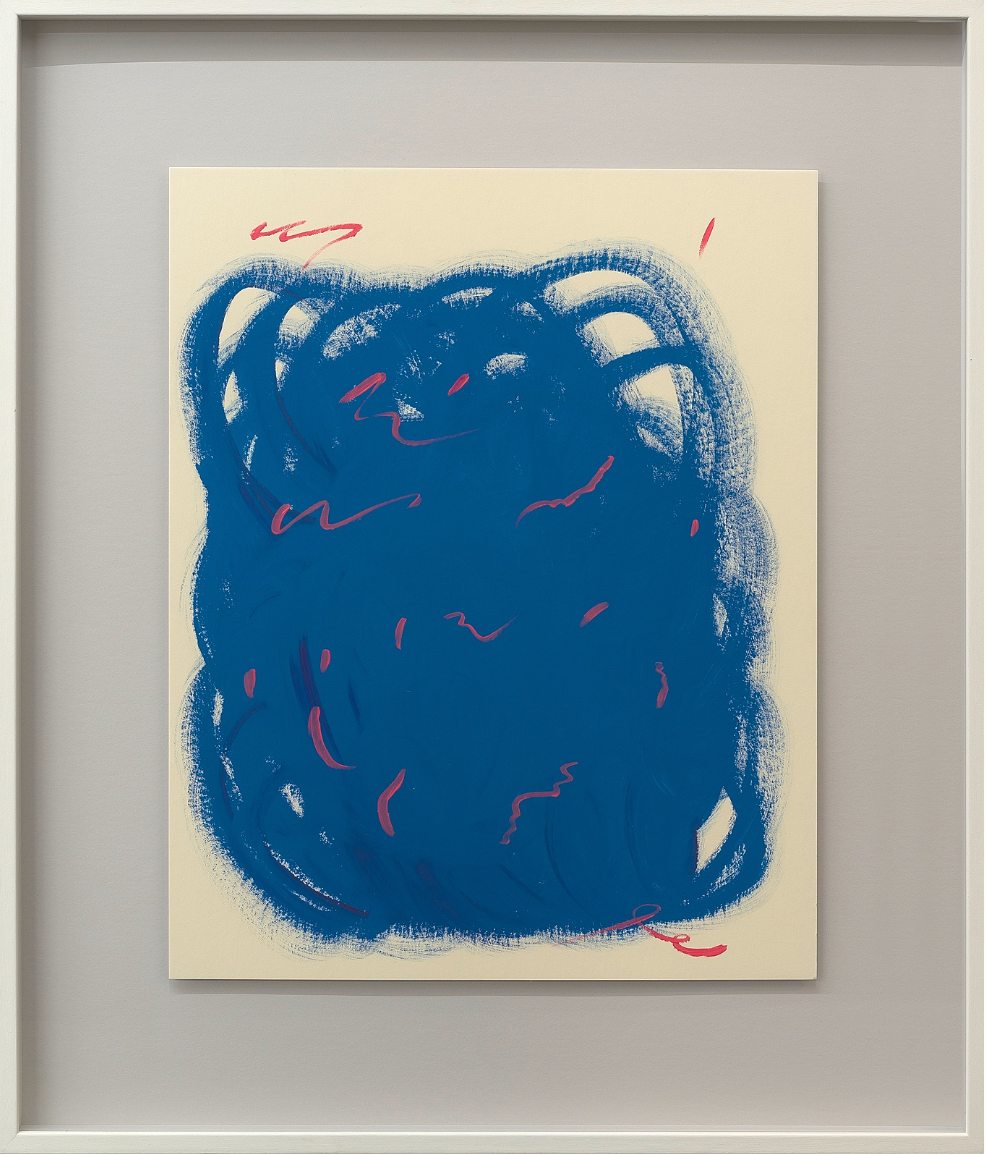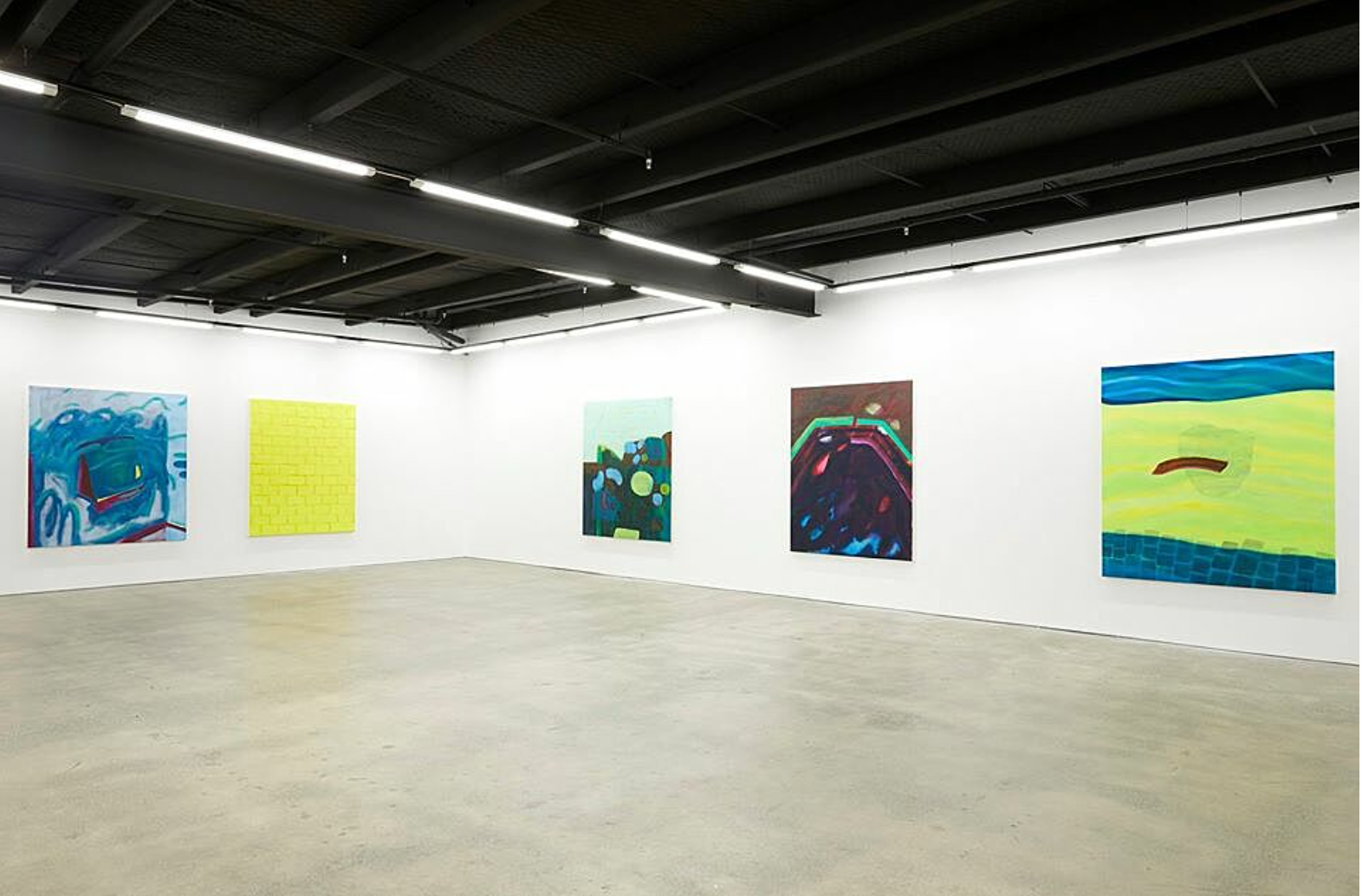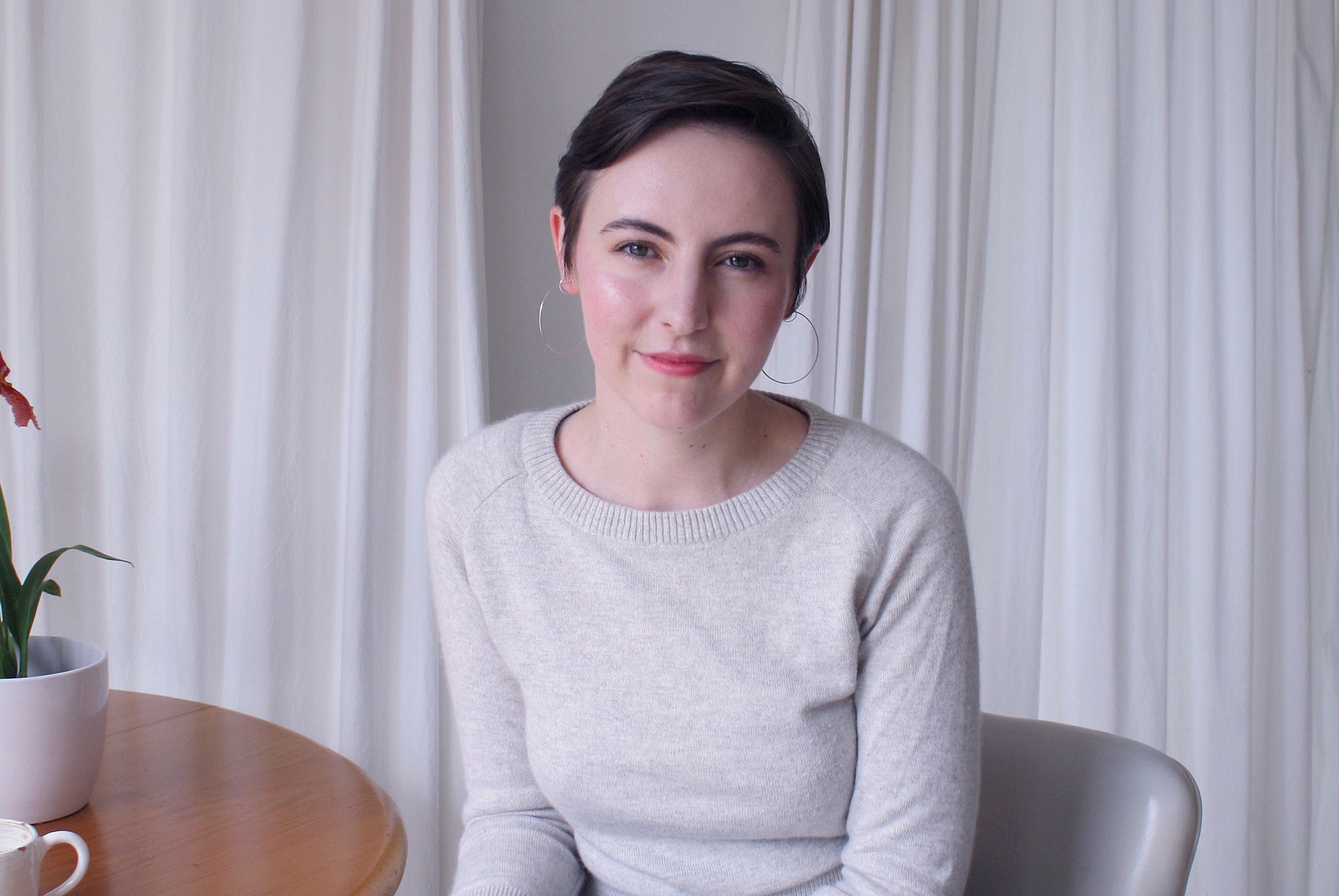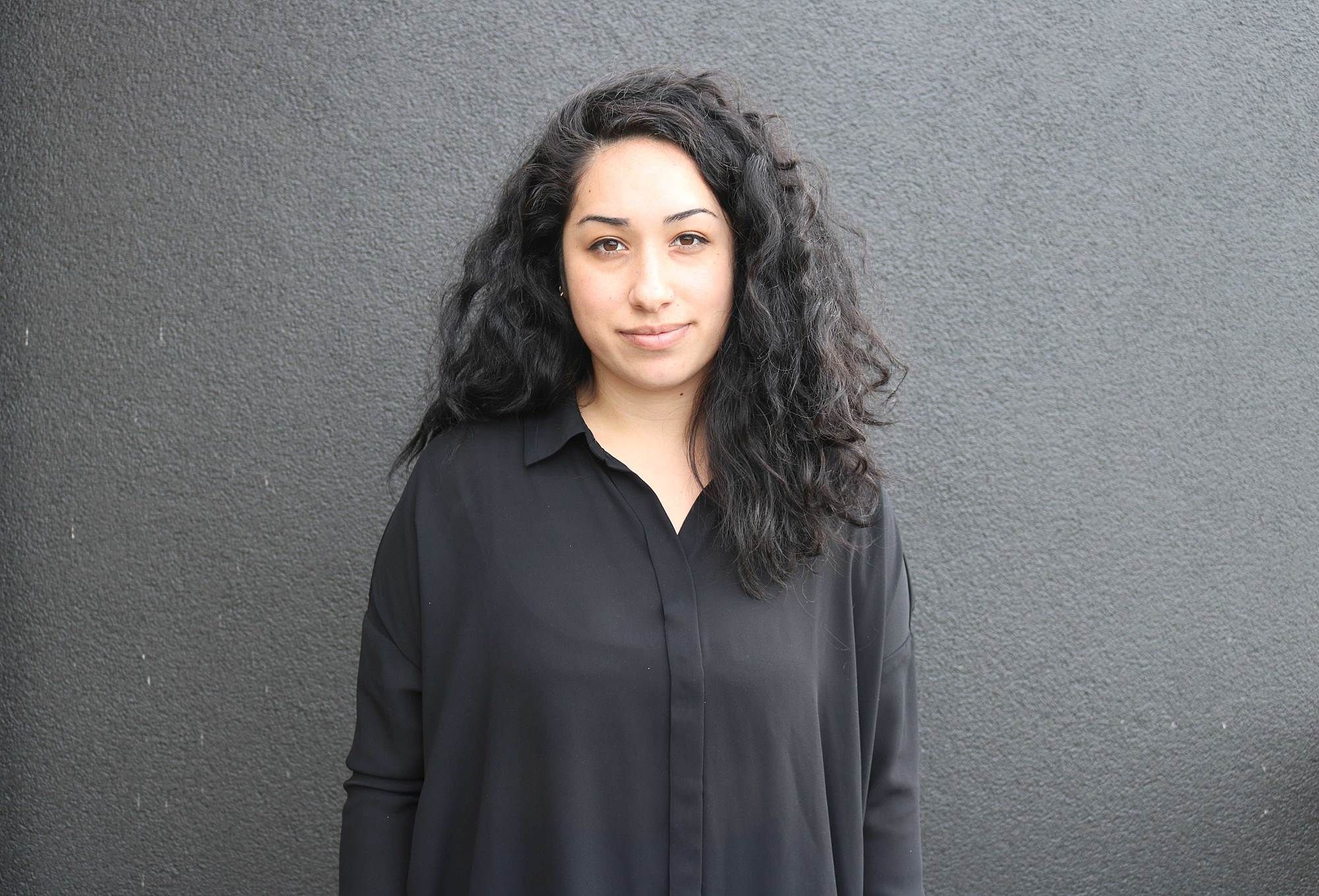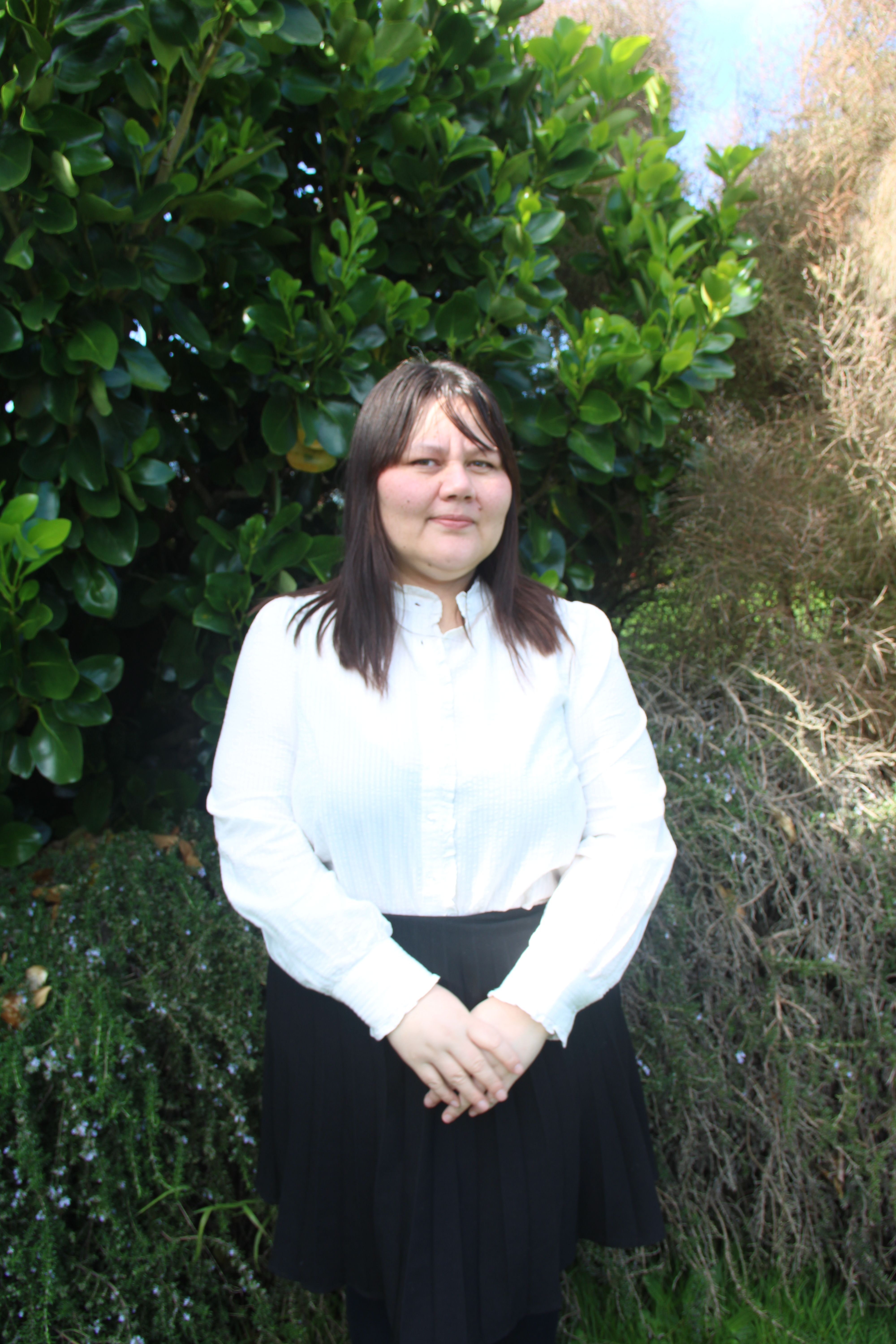The Unmissables: Three Exhibitions to See in March
The best art on show this month in the dealer galleries of Tāmaki Makaurau Auckland.
Our team of art critics, Lucinda Bennett, Lana Lopesi and Natasha Matila-Smith, have searched the city to find the best art on show in the dealer galleries of Tāmaki Makaurau this month.
The galleries are still open in Tāmaki Makaurau. Pay a quiet visit in your own time and enjoy the joyful colours and choppy textures in the work by the three painters featured in this month’s Unmissables.
Salome Tanuvasa, Untitled, 2019, acrylic on card, 710mm H x 605mm W (frame). Photographs by Kallan Macleod
Artist Salome Tanuvasa’s greatest strength is undoubtedly the secret language in her paintings. In her new show Autotelic, Salome (b. 1987) adds depth and context to this already-rich language. While there is a strong sense of formalism in her paintings, collectively they rely upon persistent experimentation and increments of change, to reveal that they are not only communicating in this secret language, but they are fabricating said language at the same time.
In Autotelic, I was quite fond of the untitled works (all 2019) that feature acrylic on card. One painting consists of a scurry of blue markings dispersed with a reddish pink. The other, similar with a glob of forest green in the background, and stronger pink lines in the foreground. There’s something delightfully less conscious in these paintings that excite me because they were new and unexpected, despite sharing similar formal properties with Salome’s previous work.
The secret language comes back into play when you begin to wonder who the work addresses. I think of each painting as an isolated event or moment—sonnets or odes, symphonies, dancing lines, whimsical and animated—dedicated to someone, but I’m not entirely sure who. Though much like the unfolding of a wider vernacular, the intended audience is slowly revealed, too, through the introduction of new elements. Those who notice the unnoticeable and consider the world in a much slower more curious lens will know exactly what Salome is trying to communicate. — NMS
Salome Tanuvasa
Autotelic
Tim Melville Gallery
10 March – 7 April 2020
Where to start, when even this slip of writing will contribute to the canon? It feels important to begin with the paintings themselves, the eloquent still lives that seem ill-suited to the placid implications of that genre. Rather than still, their paintwork is choppy, the affect suspenseful. Or perhaps I simply cannot take them as they are, cannot help but feel their context rippling beneath the calm, painted surfaces.
Failing to acknowledge that this is a restorative art history feels like a sham. What do we make of a contemporary dealer gallery displaying works by an artist whose position as wife-of-the-artist has always overshadowed her own prowess? Even on Instagram, a post promoting the show has been hash-tagged #annehamplett (sic) as well as #colinmccahon. Even at her own solo, Hamblett is undermined by the systems that now, finally, apparently, desire to uplift her.
And it’s a shame, because these really are lovely paintings. The machismo that informs the way we interpret both visual forms and the language that describes them will have many of you rankling at my use of the word lovely here, for lovely is hollow and frivolous, right? Lovely paintings aren’t important or valuable. However, I believe that restorative art history requires not only the recognition of those artists who were ignored by the canon due to their gender, ethnicity, culture or class, but also an attempt to unpick the hierarchies we’ve created and examine the ways we unwittingly feed them.
Go see this show and value its loveliness. — LB
Anne Hamblett
Early works
Michael Lett Gallery
11 March – 9 April 2020
Fu-On Chung (b. 1991) is one of our most exciting emerging painters. A graduate of AUT’s Bachelor of Visual Arts Honours (First Class) programme, Chung more recently completed his Master of Fine Arts from the Victorian College of the Arts, University of Melbourne. He also co-founded the artist run space Glovebox, which ran from 2015–2017. Through colour, abstraction and experimentation, Chung’s work tests modes of image-making through a fun and at times slippery use of paint.
Heart to break (2019) is one of Chung’s latest contributions to his growing body of work. The 1680 x 1360 yellow-on-yellow painting sits commandingly in the gallery space. On first glance it seems clear that it’s a tiled wall of rectangles, but on closer inspection I wonder if they’re bricks, iPhones, or just plain shapes that spark joy.
Heart to break sits alongside a number of equally enticing works in the artist’s latest show, One Hit Wonder, now on at Bowerbank Ninow. Chung’s latest suite of paintings are said to blend “the concept of the fool (a figure who questions authority through absurdity) with the frivolity, ephemerality and excess of camp”. This is what Chung calls foolish camp. One thing’s for sure, within the grey concrete confines of Auckland city, Chung’s foolish camp offers a delightful release. — LL
Fu-On Chung
One Hit Wonder
Bowerbank Ninow
27 Feb — 21 March
Feature image: Salome Tanuvasa, Untitled, 2019 (detail)
The Unmissables is presented in a partnership with the New Zealand Contemporary Art Trust, which covers the cost of paying our writers. We retain all editorial control.



